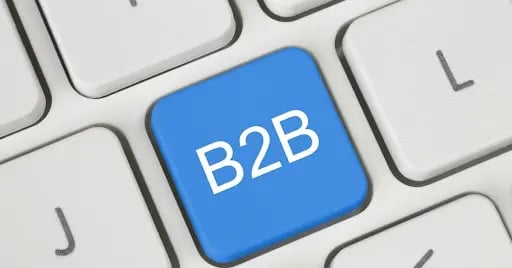On this page
Subscribe for updates
Keep up with OrderEase and access industry-leading order operation insights.
In wholesale and distribution, executives face a common challenge. Buyers place orders through every imaginable channel: email, phone calls, PDFs, EDI feeds, and even text messages. The result is a tangled web of disconnected systems, rekeyed data, and daily operational fires.
Digital transformation was meant to fix that. Many distributors expanded their Electronic Data Interchange (EDI) connections, hoping to streamline transactions with major retail partners. But EDI in ecommerce alone wasn’t enough. It improved compliance and speed, yet it didn’t give customers the flexibility or transparency they expected.
That’s why forward-thinking distributors are rethinking how retailers buy. Instead of relying solely on EDI ecommerce or continuing to process manual orders, they’re guiding customers toward integrated B2B ecommerce portals.
These connected storefronts complement EDI by offering real-time visibility, self-service ordering, and smoother collaboration for both sides.
What is Ecommerce EDI?
Ecommerce EDI is the use of Electronic Data Interchange to automate transactions, such as purchase orders, invoices, and shipping notices, between retailers, distributors, and suppliers. It reduces manual processing by enabling standardized, system-to-system communication that improves speed, accuracy, and compliance.
In modern distribution, EDI ecommerce is typically required by large retail partners that depend on automated, high-volume data exchange.
Why EDI Alone Isn’t Solving the Whole Problem

EDI, or Electronic Data Interchange, has long powered supply-chain automation by letting systems exchange purchase orders, invoices, and shipping notices without human input.
For large retailers and national distributors, ecommerce EDI is non-negotiable. It’s the standard for compliance and efficiency.
But EDI is rigid. Extending it to smaller or regional retailers is expensive and time-consuming, and many lack the tools or budget to support it. As a result, those customers still send orders by email or PDF, leaving distributors to manage two workflows: automated EDI orders from big partners and manual orders from everyone else. For ecommerce sellers, EDI doesn’t adapt quickly to new items, pricing, or campaigns, and it offers no buying experience for smaller retailers who want to browse or reorder easily.
That’s why distributors are adding B2B eCommerce portals alongside EDI ecommerce. Portals give non-EDI customers a fast, self-serve way to order, while keeping all transactions connected through one system.
Why Distributors Are Steering Buyers Toward B2B eCommerce
Distributors are resorting to B2B eCommerce portals. These dedicated, store-specific portals allow retailers to log in, view real-time inventory and contract pricing, and place orders 24/7.
A well-designed B2B portal offers:
- Personalized catalogs that reflect each retailer’s pricing, payment terms, and product access.
- Bulk ordering tools for quick replenishment of common SKUs.
- Integrated payments and account visibility, reducing invoice questions and credit-limit confusion.
- Promotional merchandising to drive upsells and introduce new lines directly within the order flow.
B2B eCommerce platforms help automate sales for smaller and mid-size retailers. Long-tail accounts are often too diverse and fragmented for traditional EDI integration. Yet they’re essential to a distributor’s growth, and making their buying process simple earns loyalty, reduces internal workload, and strengthens cash flow.
However, simply launching a portal isn’t enough. Without integration to core systems like ERP (Enterprise Resource Planning), portals become another data silo, requiring staff to rekey orders, reconcile stock, and update pricing manually.
You Can’t Kill EDI eCommerce — You Need a Hybrid Model
Distributors know they can’t abandon ecommerce EDI. Their largest retail partners demand it, and those integrations keep high-volume transactions flowing smoothly. But EDI ecommerce alone doesn’t cover the diversity of today’s retail network.
The most successful distributors now operate hybrid order ecosystems:
- EDI in ecommerce for large, technically mature retailers with DTC websites who require automated compliance and transaction speed.
- B2B ecommerce portals for buyers who value visibility and flexibility.
- A unified backend integration layer that keeps both connected to the ERP, ensuring accurate pricing, inventory, and fulfillment across channels.
This hybrid approach eliminates the false choice between “automation” and “experience.” Instead, it creates a continuum: automation where it’s efficient, human-friendly interaction where it drives growth.
With the two systems linked to a common operational backbone, distributors do not have to repeat work. Orders received via ecommerce EDI, the portal, and even via email are all fed into a single pipeline, which can be processed and reported in real-time.
Bringing It All Together with Unified Order Management
Each system on its own can be powerful, but without a central order-management layer, integration complexity multiplies quickly.
This is why the concept of a B2B Order Management System (OMS) has emerged as the next evolution in wholesale technology. A B2B OMS acts as the “nerve center” between front-end ordering channels (like portals or EDI feeds) and back-office systems.
It ensures that every order, regardless of its origin, follows the same logic, validations, and workflows. Pricing, inventory, and customer data stay consistent across channels. Reporting becomes unified. IT no longer has to maintain a tangle of point-to-point integrations.
How OrderEase Makes the Hybrid Model Work in Real Life
Most distributors understand the value of integration, but executing it often becomes a maze of middleware, custom scripts, and manual oversight. What begins as an efficiency project can quickly evolve into another full-time job for IT.
OrderEase eliminates that friction by providing a centralized B2B Order Management System designed specifically for distributors who manage mixed order channels. It brings EDI transactions, ecommerce orders, emailed purchase orders, and marketplace feeds together into one synchronized flow.
End-to-End Automation
OrderEase manages the entire order lifecycle, from placement to fulfillment and invoicing, without manual reentry. It automates acknowledgments, shipping notifications, and updates across every channel, reducing administrative workload and human error.
Seamless Integration
For real-time synchronization of data. It integrates effortlessly with leading ERPs such as Microsoft Dynamics 365, Sage 300, NetSuite, Spire, and Infor. This ensures that pricing, availability, and order status remain consistent across systems and partners.
Unified Dashboard
All orders, whether from a large ecommerce EDI retailer or a small portal buyer, flow into one consolidated view. Operations teams gain full visibility across order status, fulfillment progress, and channel performance, creating a true single source of truth.
By uniting automation and experience, OrderEase empowers distributors to scale without adding complexity.
How to Roll Out the Shift Without Breaking Relationships
Shifting retailers from EDI or email orders to a digital portal can’t be forced; it has to be encouraged through clarity, convenience, and trust. Distributors leading this change follow three key practices:
- Segment by Readiness: Identify which retailers benefit most from the portal. Large enterprise retailers can remain on EDI. Focus first on small and mid-tier accounts that still send orders manually; they’ll experience the biggest improvement.
- Communicate Value, Not Compliance: When introducing the portal, frame it around benefits for the retailer: faster confirmation, real-time stock visibility, access to promotions, fewer order errors, not “you must use our system.”
- Make Adoption Effortless: Integration matters here. The portal must always show accurate data and load quickly. If the first few experiences are smooth, buyers won’t go back to emailing POs.
A unified OMS like OrderEase provides the reliability to back up those promises. When the portal and EDI connections are both feeding the same engine, every order is processed consistently, and every stakeholder, from sales reps to warehouse teams, sees the same information.
This approach doesn’t just modernize order entry; it rebuilds trust with retailers, showing that digitization can actually make business easier for everyone involved.
Parting Thoughts
The goal isn’t to replace EDI with ecommerce, it’s to connect them. EDI in ecommerce remains essential for large retailers that require strict automation and compliance, but growth depends on extending that same efficiency to every customer.
By integrating EDI and B2B ecommerce, distributors eliminate manual processes, reduce order errors, and give all buyers a consistent, real-time experience.
OrderEase makes this possible. It unites EDI transactions, ecommerce orders, and manual POs into one automated workflow. Every order moves through the same system, ensuring accurate data, faster fulfillment, and fewer operational delays.
Talk to OrderEase and find out how integrated order management can finally make your digital transformation work the way it was supposed to.
FAQs
1. What is EDI in eCommerce?
EDI in ecommerce (Electronic Data Interchange) is the process of transferring key business documents, like purchase orders, invoices, and shipping details, between retailers and distributors automatically, system-to-system. Instead of emailing or uploading files, data flows instantly through standardized formats. This helps eCommerce distributors process large order volumes faster, reduce manual errors, and stay compliant with retailer requirements.
2. How is eCommerce EDI different from a B2B eCommerce portal?
eCommerce EDI focuses on automation; it connects two business systems to exchange transaction data with zero manual input. A B2B ecommerce portal, on the other hand, focuses on experience, it lets buyers log in, browse real-time inventory, see custom pricing, and place self-service orders.
Most modern distributors use both: EDI for ecommerce with large retail partners that need compliance and speed, and B2B ecommerce portals for smaller or regional customers who prefer an easier, web-based way to order.
3. Why use EDI for eCommerce instead of manual ordering?
EDI for ecommerce replaces slow, error-prone manual orders (email, phone, PDFs) with direct system integrations. Orders are validated automatically, inventory updates in real time, and invoices are sent instantly. This level of automation improves data accuracy, order turnaround times, and customer satisfaction, especially critical in high-volume or multi-location distribution networks.
Sync every order to your accounting system
Discover the Order Management System built to unify your entire order operations workflow. With OrderEase, you can standardize data, automate downstream tasks, and keep your accounting system perfectly in sync without relying on middleware or spreadsheets.


